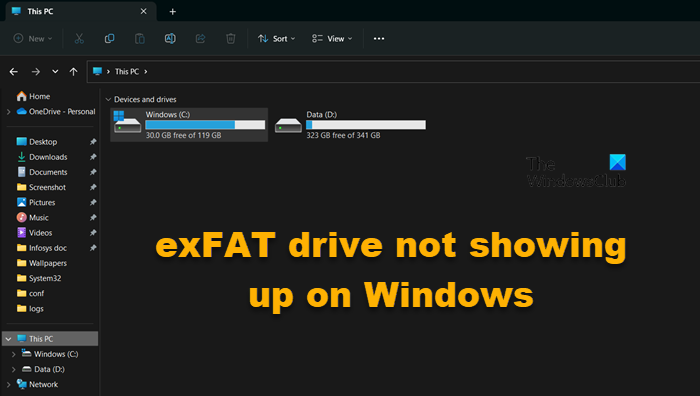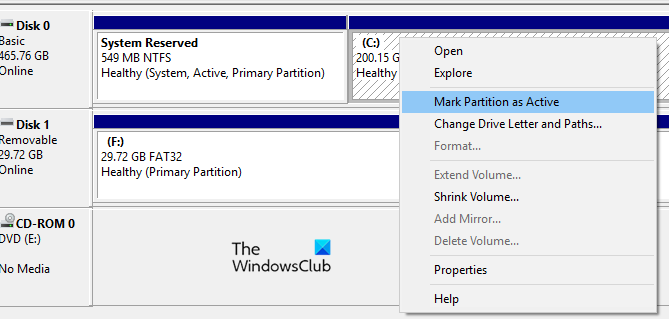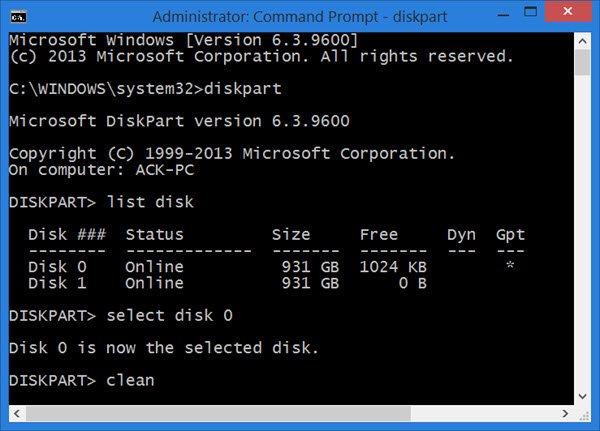When some Windows users plugged in their exFAT drive, their system refused to recognize it and the drive did not show up in the File Explorer. In this post, we will discuss this issue in detail and see what you can do to resolve the issue. So, if the exFAT drive is not showing up or the exFAT drive not mounting on your computer, this post is for you.

Fix exFAT drive not showing up Windows 11/10
If the exFAT drive is not showing up on your computer, follow the solutions mentioned below to resolve the issue.
- Plug into a different port
- Configure the unrecognized drive as active
- Reformat the drive
Let us talk about them in detail.
1] Plug into a different port
It is a possibility that the port you are plugging into your drive is not working. In that case, plug into a different port and then check if the issue is resolved. If after plugging into a different port, Windows recognizes the exFAT drive, you need to clean the malfunctioned port and if that doesn’t work, take your system to a hardware expert.
2] Configure the unrecognized drive as active

Now, let us use the Disk Management app of Windows to configure the exFAT drive that was unrecognized. We will mark it as active and give it a new letter to make it accessible. You need to follow the steps mentioned below to do the same.
- Hit Win + S, type “Disk Management” and click Open.
- Go to exFAT drive, right-click on it and click on Mark Partition as Active.
- Follow the on-screen instructions to mark the drive as active.
- To assign a drive letter to it, right-click on the drive and select Change Drive Letter and Paths.
- Finally, follow the on-screen instructions to assign a letter.
Hopefully, this will do the job for you.
Read: Windows not assigning Drive letters automatically
3] Reformat the drive

You may encounter the issue due to some bugs and glitches that may have occurred at the time of formatting. In that case, we will reformat the drive and see if the issue is resolved. To do the same, launch Command Prompt as an administrator by searching it out of the Start Menu. Click Yes, when the UAC prompt appears. Now, execute the commands mentioned below in the given order.
diskpart
list disk
That command will list all the attached drives. You need to identify the exFAT drive and run the following command; you can do that by checking the size of the drives listed.
select disk drive-letter
Note: Change drive-letter to the actual drive letter.
clean
create partition primary
format fs=exFAT
assign
These commands will reformat the drive and set the format to exFAT.
In case, you are unable to do the steps mentioned earlier or find the correct drive, there is an alternate method, for that, follow the steps mentioned below.
- Open Disk Management.
- Go to the problematic drive, right-click on it and select Format.
- In File System, select exFAT, and Allocation unit size to 128K.
- Tick Perform a quick format and click Ok.
Hopefully, this will do the job for you.
That’s it!
Read: How to format a drive in exFAT so it works on both Windows and Mac
exFAT drive not mounting in Windows
Sometimes, the exFAT drive fails to mount in Windows. The drive shows in the File Explorer but when clicked on, says “Windows is not able to detect the file system”. In that case, all that’s required for you to do is format the drive. You can check the third solution to format the drive. But since it is appearing in File Explorer, we can format the drive from there. To do the same, right-click on it and select Format. Once the Format window appears, set exFAT as File System, and also, set Allocation unit size and Volume label. Finally, check the box associated with Quick Format and click Start.
Read: Couldn’t Mount File, The disk image isn’t initialized
Why is exFAT not showing up on Windows 10?
Since exFAT is not a built-in file system for Windows, sometimes, your system will fail to detect its presence. In that case, we can either configure the drive using the Disk Management utility or just format it.
Read: USB 3.0 External Hard Drive not recognized
How do I access exFAT drive in Windows?
You can access the exFAT drive on Windows as you would access any other drive, i.e., from the File Explorer. However, sometimes, they show tantrums since exFAT is not one of the built-in Windows file systems. In that case, you can follow the solutions mentioned earlier to resolve the issue.
Read: USB Device Not Recognized, Last USB device malfunctioned.